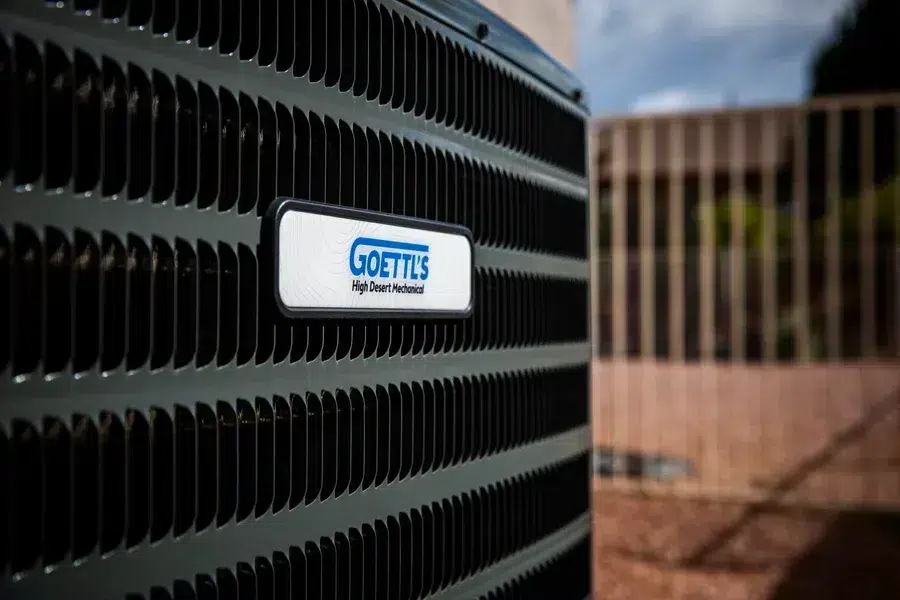The Coils Inside Your AC
Conventional ducted AC systems rely on two sets of coils to function. They’re both heat exchangers, with one extracting heat from your home and another expelling it outside. The indoor coil is called an evaporator coil. It’s called that because the refrigerant running through your AC evaporates as it absorbs heat inside the coil. You’ll find the evaporator coil in your AC’s indoor unit, typically inside or above its cabinet.
The outdoor coil is called a condenser coil. It’s the largest component of your AC’s outdoor unit. You can see yours by looking right through the open top of your outdoor unit. The coil wraps around the whole perimeter of the unit’s case. Its job is to expel heat from your home by cooling the refrigerant passing through it. As the refrigerant cools, it condenses into a liquid to return to your home to capture more heat.
What Happens When Your AC Coils Get Dirty
Dirty AC coils will create a variety of operational problems for your system. When your condenser coil gets dirty, your AC won’t remove as much heat from its refrigerant. That limits the system’s cooling capacity and forces it to run longer to accomplish its work. A dirty condenser coil might prevent your AC from sufficiently cooling your home on hot days.
A dirty evaporator coil is an even bigger problem for your AC. It will also limit your system’s cooling capacity because it prevents heat absorption into the refrigerant. The problems don’t stop there, however. A dirty evaporator coil will also obstruct airflow through your AC system. That will stress its blower fan more, which can shorten its life. It also limits how much cool air makes it to your home’s vents. That can compound your AC’s diminished capacity and sharply reduce your system’s cooling effects.
Cleaning Your Condenser Coil
In Camp Verde, your AC’s outdoor unit will likely get dirty faster than elsewhere. Our periodic dust storms and monsoons see to that. As a result, your system’s condenser coils require a deep cleaning at least once per year. You should also give them a light cleaning every three months for the best results. If you’re unfamiliar with the inner workings of an AC, leave the deep cleaning to an HVAC technician. You should schedule a cleaning appointment every spring or fall to keep your AC operating properly. You can perform the light cleanings yourself as instructed below. Doing so during and after summer will keep the coils as clean as possible.
Condenser Coil Light Cleanings
To clean your condenser coils, you must first turn off the power to your AC’s outdoor unit. You can do that from its disconnect box, which should be on a nearby wall. You can trace the power cables running from the outdoor unit to find it. Inside the box, you should see a small plastic or metal handle. You can pull it to remove the disconnect’s pullout module, which will interrupt the unit’s power. Put the module somewhere safe since you’ll need it to restore the power later.
Next, sweep up any dirt or debris accumulated around the outdoor unit. Then, peer down through the unit’s top-mounted fan to see if any leaves or twigs are blocking the blades. If you see any, pull them out. If it looks like there’s detritus inside the unit itself, you may want to call an HVAC professional for help. If not, you can proceed to the next step.
You’ll need a garden hose with a spray nozzle to rinse your condenser coil. It’s important to remember that the fins of the coil are delicate. You should never use a garden hose at full power to clean them. Instead, turn your hose bib on no more than a quarter-turn. That will provide enough water without risking damage to your condenser coil.
Use the garden hose to spray your condenser coil, beginning on the inside. You can use the top opening of the outdoor unit to reach the coil. Always spray from the top of the coil toward the bottom. When that’s done, start on the outside of the coil. You can spray through the openings on the sides of the outdoor unit’s case. Again, start at the top, moving left to right before moving downwards. The idea is to dislodge dirt and dust and keep it flowing away from the fins, using gravity to assist. When you’ve rinsed the whole unit, re-insert the disconnect pullout module to restore power.
Cleaning Your Evaporator Coil
If you’re keeping up with regular air filter changes for your AC, its evaporator coil shouldn’t need frequent cleanings. That’s good since they’re far more challenging to clean than your system’s condenser coils. Depending on where your AC indoor unit is, you may have limited room to work or difficulty reaching the coil. Most homeowners leave the job to an HVAC technician out of an abundance of caution. For reference, here’s what’s involved.
The Evaporator Coil Cleaning Process
The first step in the evaporator cleaning process is turning off the power to the indoor unit. That’s done from your home’s main electrical panel. Next, the technician will locate and remove the access door covering the evaporator coil. The professional will inspect the coil with the door removed to determine their next steps.
Typically, they’ll use compressed air to dislodge accumulated dirt and vacuum it with a shop vac. Next, they’ll use a soft-bristle brush to remove any remaining stubborn dirt. With that done, they’ll inspect the condition of the coil’s fins. If any appear bent, they’ll use a fin comb to straighten them. Then, the technician will spray the coils with a specialized cleaning mixture. After briefly leaving the mixture to work, they’ll rinse the coil with water to complete the cleaning process. Finally, they’ll replace the access door and turn your AC’s power back on. This completes the professional AC maintenance service once the technician confirms that everything works well.
Trusted Local AC Maintenance Partner
If your AC coils need cleaning in Camp Verde, Goettl’s High Desert Mechanical is the place to turn. Our HVAC technicians are NATE-certified and have the training and skills to do the job right. Plus, we’re a member of the Air Conditioning Contractors of America, the leading HVAC trade organization. We offer complete HVAC installation, repair, and maintenance services. We offer plumbing services as well. We also provide indoor air quality services, ductwork, and zone control systems. We’re BBB-accredited with an A+ rating, reflecting our spotless reputation for quality.
So, if you need your Camp Verde home’s AC serviced, call Goettl’s High Desert Mechanical today!




